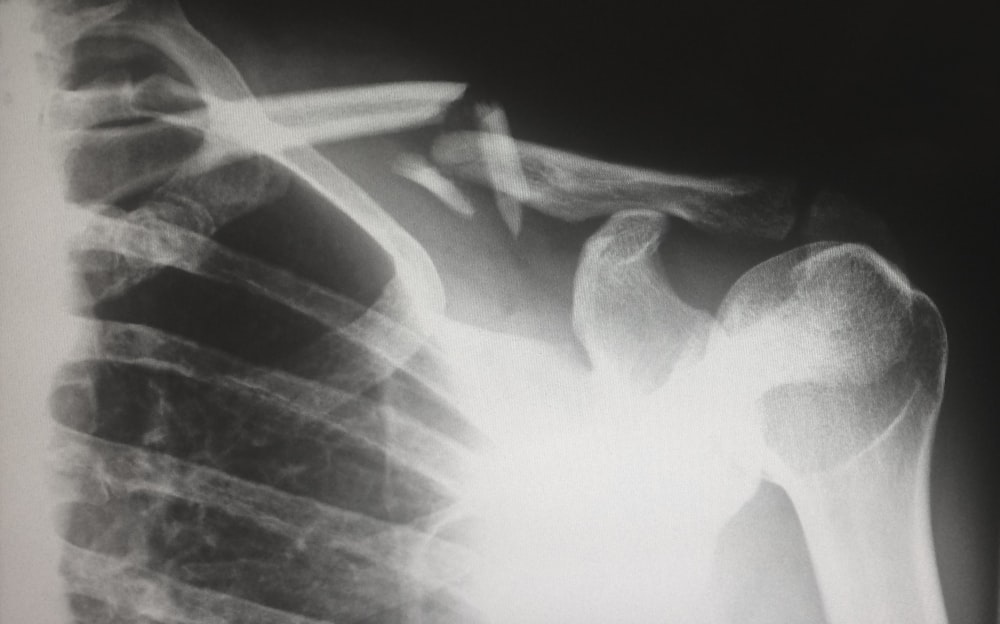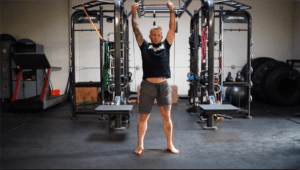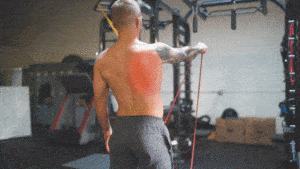Here are the two must-do resistance band exercises that have helped to keep my shoulders stable and mobile as I make my comeback.
For the last three years, I’ve been plagued by nagging shoulder injuries. Unfortunately, I had to have surgery on both shoulders to fix both torn rotator cuffs and torn labrums last year. Now, I’m on the mend and in addition to optimizing my training and diet, I’ve employed elastic bands as a way to rehabilitate and strengthen my shoulders. Before we get into that, here’s some general shoulder info to better help you understand the joint and how you too may be susceptible to an injury.
The Anatomy Of The Shoulder
The shoulder joint is a structure made up of three bones—the clavicle (collarbone), the scapula (shoulder blade), and the head of the humerus or upper arm. These three bones come together to form the capsule that the head of your upper arm sits in. This design grants you more mobility than any other joint in your body—you can swing your arm up overhead, behind you, and side-to-side.
The price of that range of motion, however, is a lack of stability. The ball of the humerus is held in place only by your rotator cuff—a group of four small muscles—and the labrum—padding of cartilage that aids in stability. Every time I throw a punch or elbow or parry a jab, I’m stressing the rotator cuff muscles and wearing down the labrum. Eventually, they just gave out.
Road To Recovery
Post-surgery, and once you’re cleared by doctors to exercise again, you’ll want to focus on strengthening the rotator cuff muscles. The shoulder joint itself can’t be trained, but by training the rotator cuff muscles you’ll help to keep the joint stable and mobile.
Intelligently planned strength and conditioning work will do the trick, but to ensure the area is warmed up beforehand, I like to use bands to contract the surrounding muscles and increase blood flow to the area.
What’s nice about using bands is that you don’t have to go heavy at all, and can increase the difficulty by either doing more reps or holding the contraction for a little longer. In fact, you don’t want to push a ton of weight for your stability muscles in the shoulder; they’re endurance muscles. It keeps your shoulder in the socket, it’s squeezing, it’s contracting for a longer period of time.
This is known as rehabilitation. Though I’ve already been injured, my shoulders are now healed and working with bands will help prevent further injury. Check out my road to recovery bouncing back from double shoulder surgery.
The Moves
Here are two moves that have been instrumental in helping me keep my shoulders safe as I aim to get back into the Octagon. Start with a light band for these. Again, the goal is to warm the area up and feel a contraction in your shoulder–not to get a pump and build muscle mass.
Banded Front Raise
Place one end of the looped band under both feet, holding the other end with both hands set shoulder-width apart. The wider your stance, the more resistance you’ll experience.
Now, squeeze your shoulder blades together and down into your back pockets and raise your arms, keeping them fully extended, until they’re completely overhead. I do 15 to 20 reps of these, then we move on.
One-Arm Banded Front Raise
Set up the same way you did for the banded front raise, but grab the band with just one hand. Now, raise your arm up, with your elbow locked out, until it’s level with your face.
Hold that position for a beat and then extend your arm outward, still keeping it straight, until its parallel with the floor. It’s ok to let your torso rotate a little as you do this.
Bring your arm back in, and then bring it back out again for three reps. That’s one rep. Repeat the entire process over again for a total of 10 reps for each arm.
A Word On Your Scapula
The function of the scapula, aka the shoulder blades, is to protract (bring forward) and retract (bring back) your shoulders. When you’re doing these two exercises, it’s important to keep them retracted and pushed down—like you’re trying to put them into your back pockets. This locks your rotator cuff into place which protects the area and allows you to better activate the target muscles. That is, after all, the point of these moves—to strengthen and stabilize your shoulder.
Final Thoughts
These are great training tools to keep in your toolbox, but these two band moves are just that—a couple of tools among many. Don’t think that you can whip a band, pump out some reps, and have bulletproof shoulders and a more chiseled body. That takes a lot more effort and consistency.
If you are looking to take your training to the next level in a safe and effective way, then check out my Get Fit to Fight course. In it, I lay out the fundamentals of striking and grappling, along with the training methods that have made me one of the best pound-for-pound mixed martial artists in the world. You’ll learn how to fight, get in stellar shape, and, most importantly, you’ll stay safe doing it.

